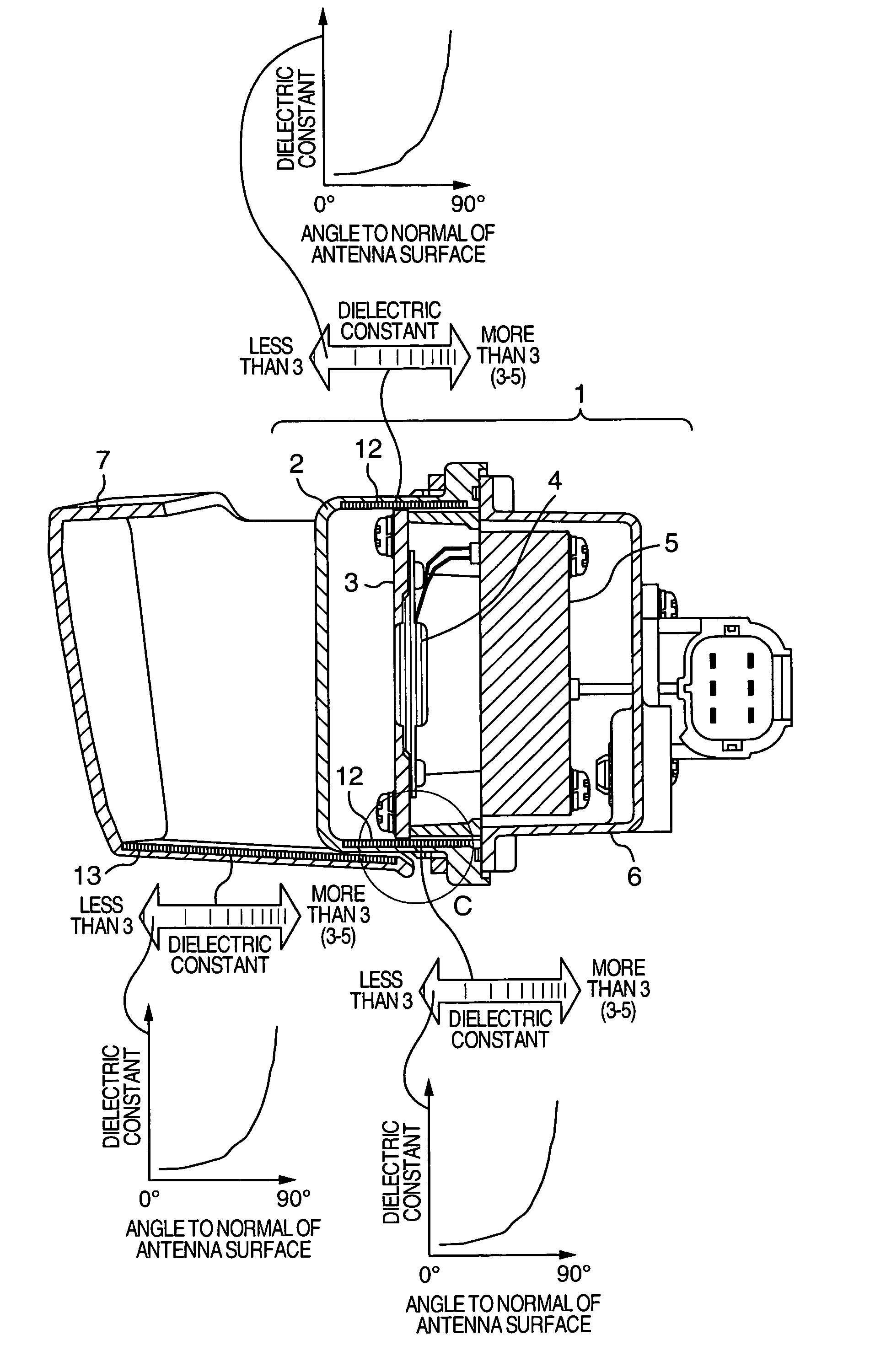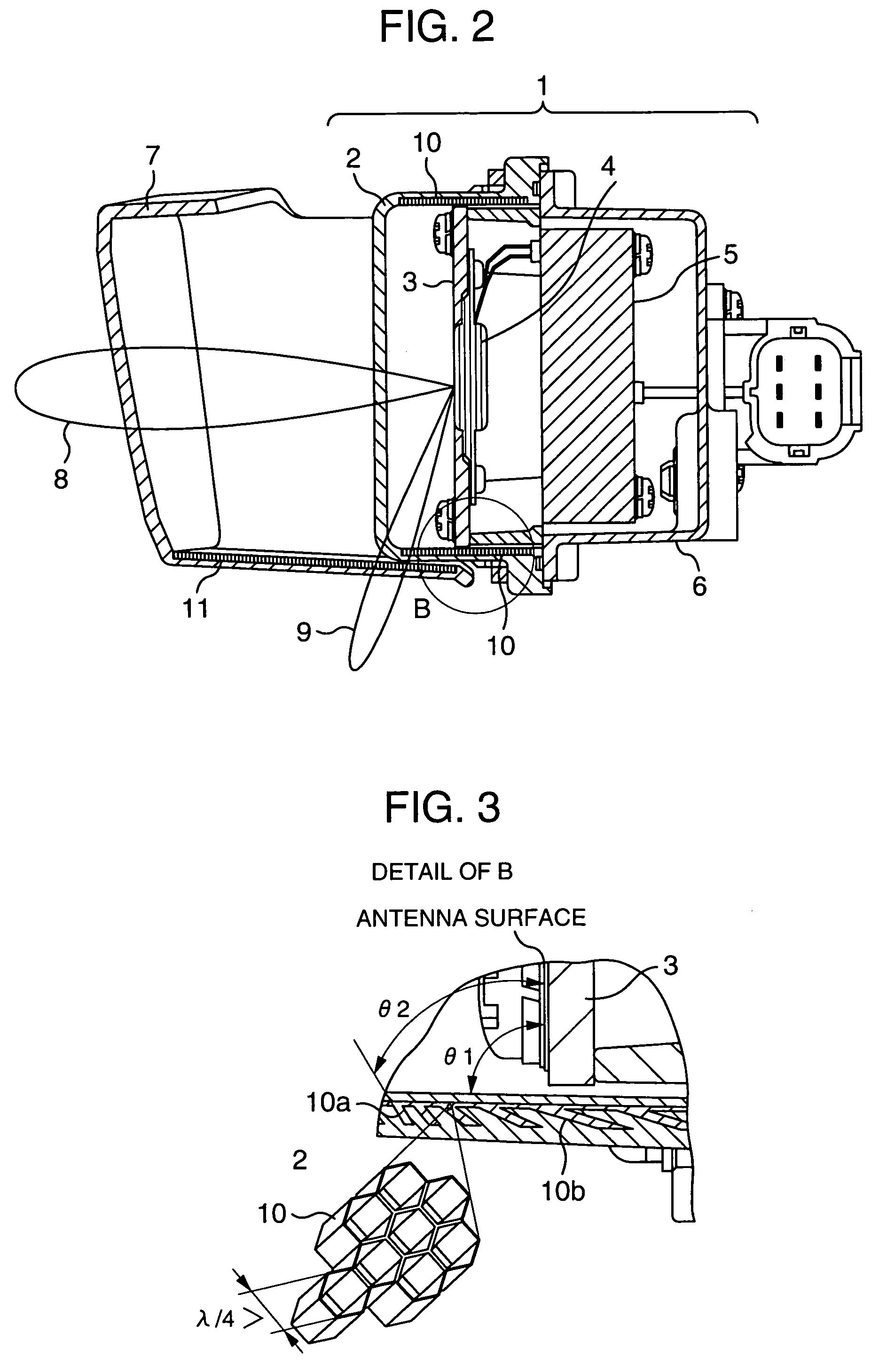Millimeter wave-radar and method for manufacturing the same
- Summary
- Abstract
- Description
- Claims
- Application Information
AI Technical Summary
Benefits of technology
Problems solved by technology
Method used
Image
Examples
Embodiment Construction
[0025]An embodiment of this invention will be described with referring to the accompanying drawings.
[0026]FIG. 11 shows a front view of a millimeter-wave radar and FIG. 1 is a cross-sectional view of the millimeter-wave radar taken along the line A—A of FIG. 11. The millimeter-wave radar of FIG. 1 comprises a radome 2, an antenna base 3 incorporating transmission and reception antennas, a control circuit 5, an RF module 4, and a housing 6 fixing the antenna base 3 and accommodating the control circuit 5 and the RF module 4. In front of the antenna base 3 is mounted the radome 2 that covers the entire surface of the antenna base and protects it against bouncing pebbles and rain. Depending on circumstances a radar cover 7 may be installed in front of the radome 2 to enclose it. Further, only the radar cover 7 may be used without the radome 2. It is also possible to use a windshield of the car as a radar cover.
[0027]Reference numbers 8 and 9 in FIG. 1 conceptually represent a main beam...
PUM
 Login to View More
Login to View More Abstract
Description
Claims
Application Information
 Login to View More
Login to View More - R&D
- Intellectual Property
- Life Sciences
- Materials
- Tech Scout
- Unparalleled Data Quality
- Higher Quality Content
- 60% Fewer Hallucinations
Browse by: Latest US Patents, China's latest patents, Technical Efficacy Thesaurus, Application Domain, Technology Topic, Popular Technical Reports.
© 2025 PatSnap. All rights reserved.Legal|Privacy policy|Modern Slavery Act Transparency Statement|Sitemap|About US| Contact US: help@patsnap.com



